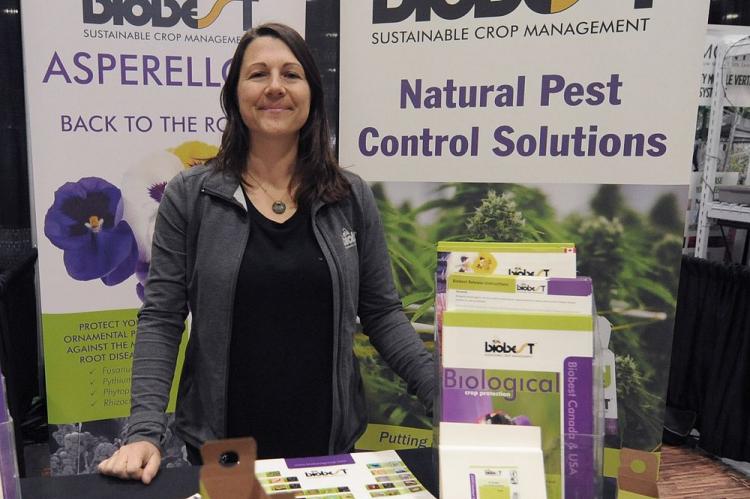Pest problems grow with Canadian cannabis industry
Scientists are in a battle to learn what kinds of pests and diseases pose a risk to cannabis and how to beat them.
Amanda Brown’s job requires a knowledge of both biology and battle strategy.
As a biological crop protection specialist, she sends “armies” of beneficial insects in search of the pests that devour B.C. crops like cucumbers, tomatoes, peppers — and now, cannabis.
“It’s a beautiful system,” she said. “It’s a very holistic approach.”
With legal cannabis cultivation still in its early days, scientists are in a fight to learn what kinds of pests and diseases pose a risk to the plants and how to beat them.
“Pests and diseases are on the increase,” said Zamir Punja, a professor in plant biotechnology at Simon Fraser University. “It definitely represents a challenge to the industry.”
As the overall area of cannabis production increases, so do the problems and their chances of spreading. Growers across North America are currently facing a root aphid outbreak that appears to have started in Colorado.
Punja said the appearance of pests in the regulated industry was predictable. Spider mites, for example, are an issue for growers of almost every crop in B.C.
“It’s certainly not unexpected to see them,” agreed Brown, who works for Biobest Canada.
But other pests are less common.
“Pests that only target cannabis are more difficult to treat. We’ve had less time to study what works,” she said.
Bugs like cannabis aphids aren’t new, but in the previously illegal industry, growers weren’t limited by regulations.
“If they came upon these tricky pests, they could spray something and nobody would know,” she said.
Health Canada regulations forbid the use of chemical pesticides, including some that have been deemed safe for use in food production, meaning growers must depend on an arsenal of organic and biological products, including beneficial insects.
“It’s not as simple as replacing Chemical X with Bug Y,” said Brown.
The specialist helps growers develop pest-control programs that are tailored to their crops, growing style and pest problems. She believes that in time cannabis production and pest-management strategies will become more standardized across Canada.
Punja, too, is at the forefront of disease-management practices. His focus is on identifying the problem and how it arrived at a specific facility, whether it was through movement of plant material or on a worker’s clothing.
Prevention and management often involve cleanliness, as well as the quarantine of infected plants.
The scientist believes Health Canada may eventually approve more products for pest management, but research is needed to make the case to the federal Health Ministry. The companies that produce chemical pesticides may be reluctant to undertake the research or make the application since many of them are based in the U.S. where cannabis is still illegal under federal law.
A limited number of products approved for cannabis — about 21 non-chemical approaches, compared with almost 100 chemical and non-chemical approaches for tomatoes — means Canadian cannabis growers must be innovative to deal with pests.
“In talking to producers, they seem very keen to try new things,” said Punja. “I don’t see this hindering them.”
- Log in to post comments

